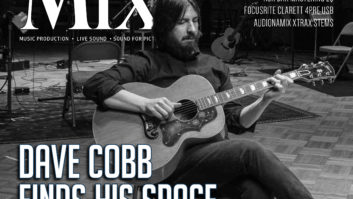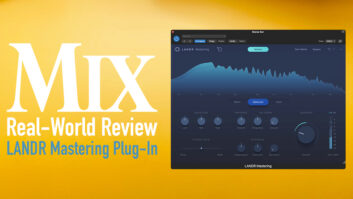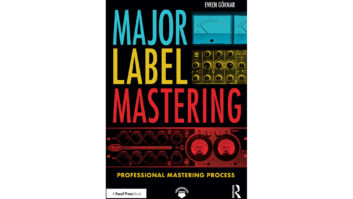There’s nothing regular about Regular John Recording’s BAX Mastering EQ! I’ll dive straight in and tell you that this box kicks some serious butt. I received the unit just in time for a big album mix session at RAK Studios, so rather than wait for the mastering stage, I decided to strap the RJR across my mix bus.
But before delving into the sonics of this big boy, let’s have a look at what you get right out of the box.
Back to Front
The back panel of the BAX sports a clean and uncluttered layout. The power IEC lives in the middle of the unit, and the audio Inputs/Outputs are located either side, on XLRs. Nice and simple, right?
That takes us to the front panel of the 3 RU EQ. If you dig old-school, vintage gear, you’re going to love this one. The front panel is also simply and neatly laid out. A big, bright-red power light in the middle lets you know that the unit is on and separates the Left and Right channels. A quick glance at the controls just shows you this machine means business. The switches and the rotary pots are rock-solid and were obviously inspired by that ’60s and ’70s style of recording equipment that appears to be back in vogue.
Now, the functionality. The BAX is a 3-band EQ comprising high and low Baxandall shelves, a parametric mid-band, and highpass/low-cut filter. The low-cut is a 6dB per octave cut-only filter allowing you to remove the unwanted subsonic areas. You can combine it with the Low boost to control what’s happening in bottom end of the material. It ranges from Off to 40 Hz, through 10 and 20 Hz.
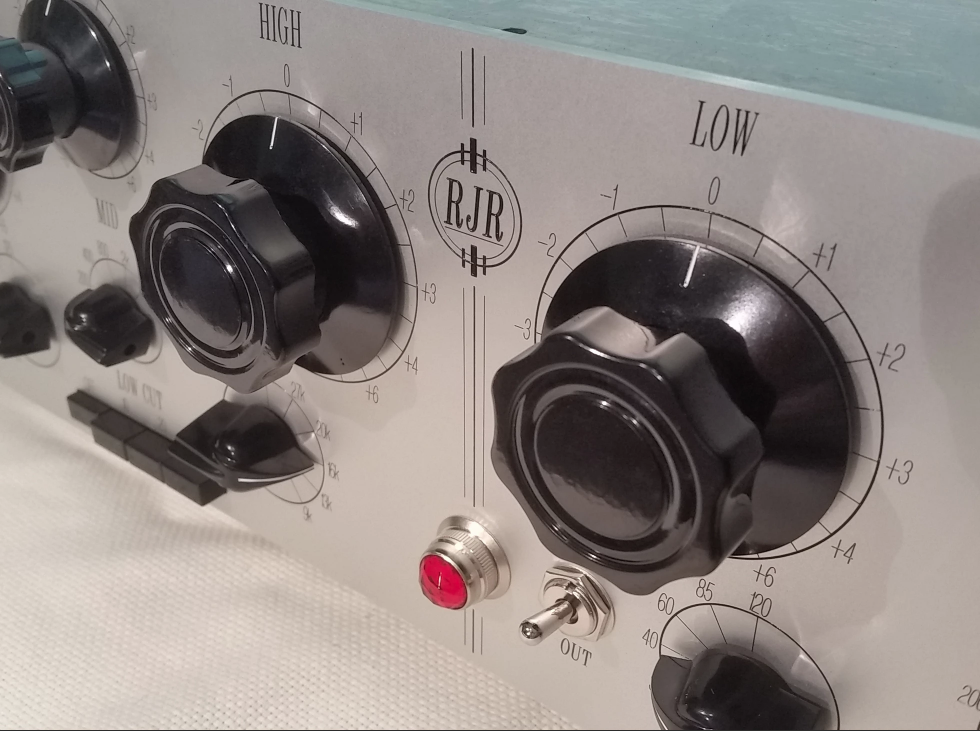
The Low frequency band runs from 20 Hz to 120 Hz, which can be cut or boosted from 0.5 dB to 8 dB. Likewise, the High band can be cut or boosted by the same amounts, varying from 9 kHz to 40 kHz. The parametric Mid band has the same boost/cut for frequencies ranging from 200 Hz to 7,000 Hz.
As the manual states, there are a few things that are useful to know about this particular unit, as well as Baxandall EQs in general. First, the bands of the EQ are both fluid and interactive. With most EQs, the frequency points on the front panel are static; this is not the case with BAX Mastering EQ.
The actual knee point of the filter curve will move a little bit depending on how much boost/cut is being used within that filter band. And the interactivity doesn’t quite stop there. The knee point will also move depending on how much boost/cut you apply on the other filter bands, as well as which frequency the other filter bands are set to. The more boost/cut you use, the more the knee will shift; by the same token, the further apart the frequency selections of the different bands, the less they will interact.
So it’s good practice to keep in mind that the labeled frequency points on the front panel are a general average of the knee location and they should not be taken as a definitive hard number. Baxandalls are intuitive, emotive EQ circuits and should be used as such.
To round out the front-panel description, both channels have a Bypass switch. When IN is selected, the EQ is in circuit and active. Alternatively, OUT engages the electronic relay, which removes the EQ circuit from the audio path entirely and gives you a hard bypass.
Let’s Tax the BAX
I love all kinds of audio gear—intricate, complex and multifunctional—but more than anything, I like equipment that gets straight to the point and just deals with the task at hand. The RJR BAX Mastering EQ is one of these no-nonsense tools that does exactly what it says on the label.
As mentioned, I was sent the unit the day I was to start the album mixes for UB40 (feat. Ali, Astro & Mickey)’s A Real Labour of Love. Rather than wait until the mastering stage, I decided to put the BAX Mastering EQ into the mix chain and not be distracted by the “mastering” label. The mixing for this album took place at RAK Studio 3.
Needless to say, this band loves low end! There are a lot of subharmonics going on in this music, so I had the Low Cut set at 10 Hz. I didn’t go higher because I didn’t want to interfere with what would happen in the mastering. Generally, I had the Low frequency set to 30 Hz for that Pultec vibe, the mid-band would vary between 4-7 kHz lifts or 400-800Hz dips and because I love ultra–high air so much, the high band was set to 40k! For the most part, the processing didn’t go any further than 1.5 to 2 dB cut/boost.
Now, I can freak out over a piece of gear as much as I like, but if the artist doesn’t like it, it isn’t worth the cardboard it came in. Every single time I’d switch in the RJR BAX Mastering EQ, everybody’s reaction was, “Wow! Keep that on.”
So at the mix bus, I absolutely loved this EQ. I got to live with it for mixing 16 songs, but I only got to use it gently. It was time to hear what else it could do. Whenever something is labeled to be something specific, I like to take it out of its comfort zone and see how it behaves in a situation it wasn’t necessarily designed for.
That’s exactly what I did. The RJR BAX and I travelled to Monnow Valley Studios in Wales (yes, that studio with all of Andrew Scheps’ gear) to record heavy rockers 10.Gauge’s EP Rain’s Coming.
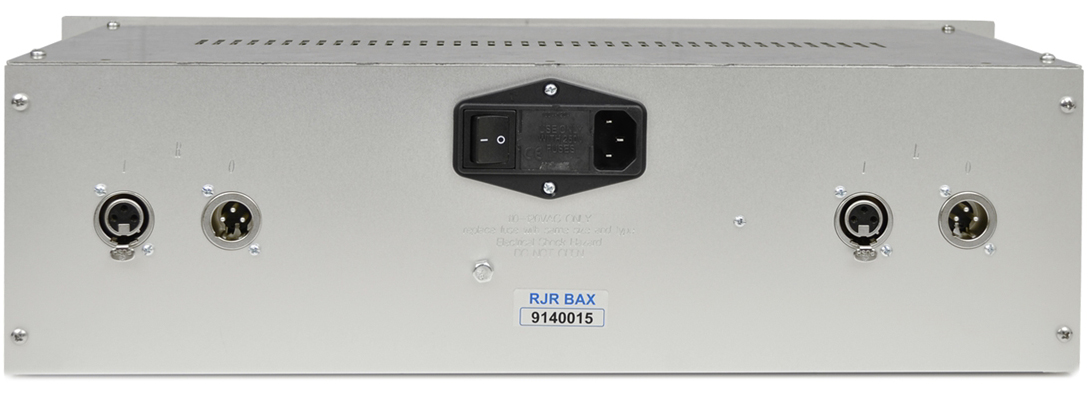
The BAX Mastering EQ was put to work on shaping the kick drum and acoustic guitar. It was just wonderful to have that fine tuning on the one hand, and on the other, those fluid EQ curves added a great warmth and musicality to the recordings.
Once all the songs were mixed back at my West London Sonic Cuisine, the mastering went through the RJR for a little low-end tightening and that super open air lift at the top. Even with small mastering amounts of half a dB here and there, the RJR brings so much fatness to the table.
I cannot praise the RJR BAX Mastering EQ enough. This relatively young company takes great care in hand-building every single unit, and it shows. The build quality is meticulous. None of the switches and pots are wobbly, and everything just feels sturdy.
I simply love the sonics of this box, and to me it is the perfect musical partner you want with you in the studio, be it in a recording, mixing or mastering environment.
As the guys at RJR say: “Go forth and do some EQ-ing!”
Product Summary
Company: Regular John Recording
Website: www.regularjohnrecording.com
Price: Inquire
Pros: Amazing low end, great top-end clarity, very musical
Cons: I’m really reaching here, but I’d like the power switch on the front panel.
Try This
Don’t allow yourself to be pigeonholed into what the Mastering EQ label says. Use it in recording and mix situations as well, and don’t be afraid to push it to the max. This is one of those units you can drive hard and it won’t sound horrible!
